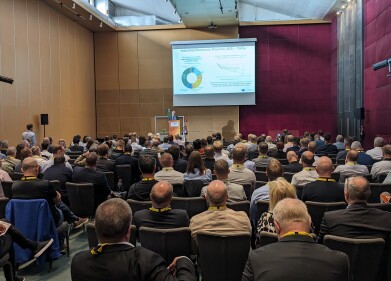Air monitoring
Why Have Some Types of Pollution Increased During Lockdown?
Jun 03 2020
One of the few positive aspects of the current crisis that has beset the world is the environmental implications of coronavirus. With many businesses and industries in hiatus and traffic on our streets, railways and skies greatly reduced, many types of air pollution (such as carbon dioxide (CO2) and nitrogen dioxide (NO2)) have dropped significantly in recent weeks.
However, that isn’t quite true across the board. Particle pollution has actually peaked twice in the last six weeks, firstly at the end of March and then again over the Easter weekend. Why, if industrial and anthropogenic activity have dropped off, has particle pollution continued to go from strength to strength?
Par for the course
One of the main reasons is simply seasonal. While spring might be regarded as a time of rebirth and growth, it’s also normally the most contaminated part of the year in Western Europe. A mixture of weather patterns and increased agricultural activity mean that spring smogs are an institution across much of the continent, normally registering on the Air Pollution Index (API) between eight and ten (with ten being the highest value possible).
This year, the API showed readings of between four and six across much of England and Wales. So while that’s higher than it has been all year, it’s significantly lower than it normally is during springtime. As such, the current peaks in air pollution can still be regarded in a positive light, given that they are a regular (and usually more pronounced) occurrence at this time of the year.
The source of smog
But if the country is under lockdown, why is there any particle pollution at all? According to analysis conducted by King’s College London, the major culprits were traffic exhaust fumes (despite a significant reduction in cars on the road) and fossil fuel combustion at nearby power plants. Wood burning in private residences (for heating and cooking purposes) also added to the contamination.
Meanwhile, spring smog is generally brought about by agriculture, and farming is one industry that is less affected by lockdown measures than most. In particular, the fertilisers and manure that are sprayed onto crops to boost their growth and maximise yields contain ammonia, itself a key component of the particle pollution.
What can be done?
Given that agriculture is the main catalyst in the annual spike in emissions, better management of ammonia levels in agricultural environments could go a long way to bringing spring smog under control. In fact, an international research paper concluded that halving the amount of ammonia used in agriculture could bring down European deaths attributable to air pollution by approximately 20%.
Means of achieving this could include using precision farming to only use the exact amounts of fertilisers necessary to achieve optimum yields, thus saving farmers money at the same time. More responsible storage of slurry and manure, alongside more sustainable forms of animal feed, are other methods of bringing down the agricultural pollution footprin
Digital Edition
AET 28.4 Oct/Nov 2024
November 2024
Gas Detection - Go from lagging to leading: why investment in gas detection makes sense Air Monitoring - Swirl and vortex meters will aid green hydrogen production - Beyond the Stack: Emi...
View all digital editions
Events
Jan 12 2025 Abu Dhabi, UAE
Jan 14 2025 Abu Dhabi, UAE
Jan 20 2025 San Diego, CA, USA
Carrefour des Gestions Locales de L'eau
Jan 22 2025 Rennes, France
Safety, Health & Wellbeing LIVE
Jan 22 2025 Manchester, UK



















